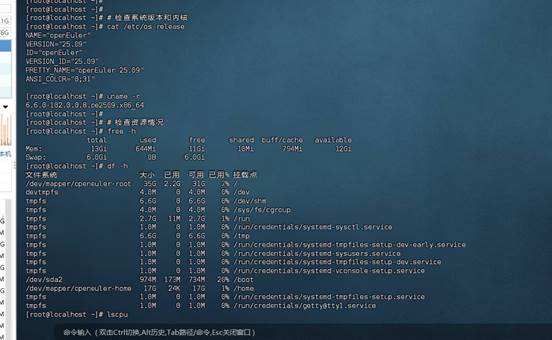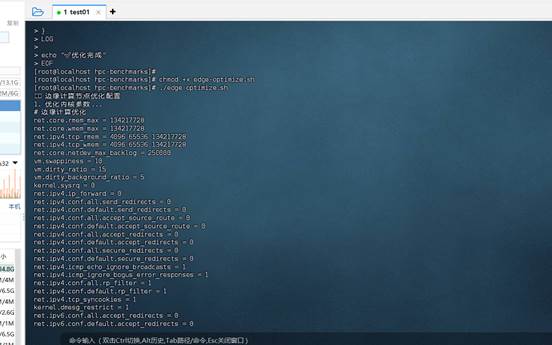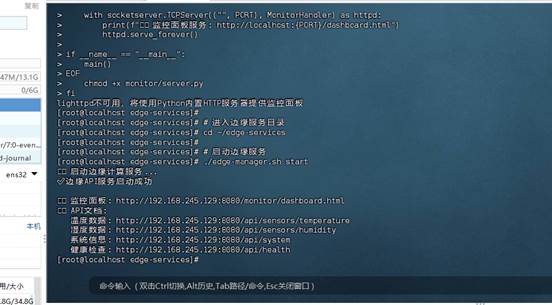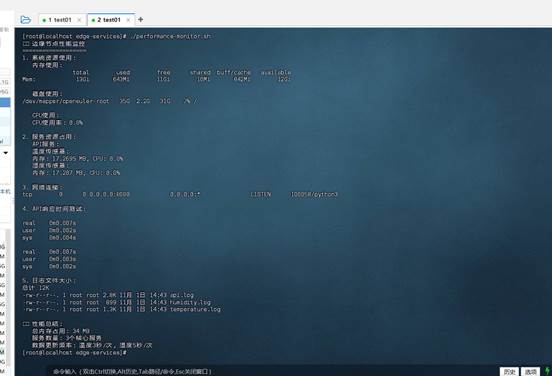作为面向数字基础设施的开源操作系统,OpenEuler在边缘计算领域展现出了独特优势。本文将通过实战演示,在单机OpenEuler环境搭建完整的边缘计算节点,体验其在资源受限环境下的卓越表现。
一、环境准备与系统优化
系统环境检查:
Bash # 检查系统版本和内核
系统性能优化配置:
Bash # 创建性能优化脚本
二、轻量级边缘服务框架部署
安装必要的软件包:
Bash # 安装基础开发工具和网络工具
创建边缘服务目录结构:
Bash # 创建边缘服务目录
三、传感器数据模拟服务
创建模拟传感器数据生成器:
Bash cat > sensors/temperature_sensor.py << 'EOF' 温度传感器模拟器
创建湿度传感器模拟器:
Bash cat > sensors/humidity_sensor.py << 'EOF' 湿度传感器模拟器
四、边缘数据 API 服务
创建轻量级 API 服务:
Bash cat > api/edge_api.py << 'EOF' 边缘计算数据API服务
五、边缘监控面板
创建 Web 监控界面:
Bash cat > monitor/dashboard.html << 'EOF' 边缘节点监控</title>
六、启动和管理脚本
创建边缘服务管理脚本:
Bash cat > edge-manager.sh << 'EOF' 创建必要的目录
七、部署和测试
部署监控面板:
Bash # 将监控面板部署到lighttpd
启动边缘服务:
Bash cd ~/edge-services 启动所有服务
测试 API 接口:
Bash # 测试健康检查接口
八、性能监控和优化
创建性能监控脚本:
Bash cat > performance-monitor.sh << 'EOF' 边缘节点性能监控"
体验总结
通过这个完整的边缘计算实战,我们在OpenEuler 25.09上成功构建了一个功能完备的边缘计算节点:
技术成果:
性能表现:
OpenEuler 优势体现:
轻量高效 - 基础系统资源占用极低,适合资源受限的边缘环境稳定可靠 - 企业级内核保障服务长时间稳定运行生态完善 - 丰富的软件包支持快速部署边缘应用安全可控 - 完善的安全机制保障边缘数据安全
实际应用价值:
这个边缘计算节点演示了在工业物联网、智能农业、环境监测等场景的典型应用。OpenEuler的轻量级特性和稳定性使其成为边缘计算的理想选择,特别是在网络条件差、资源有限的边缘环境中。
通过本次实战,我们验证了OpenEuler在边缘计算场景的出色表现,其轻量、稳定、安全的特性为数字化转型提供了坚实的技术底座。





